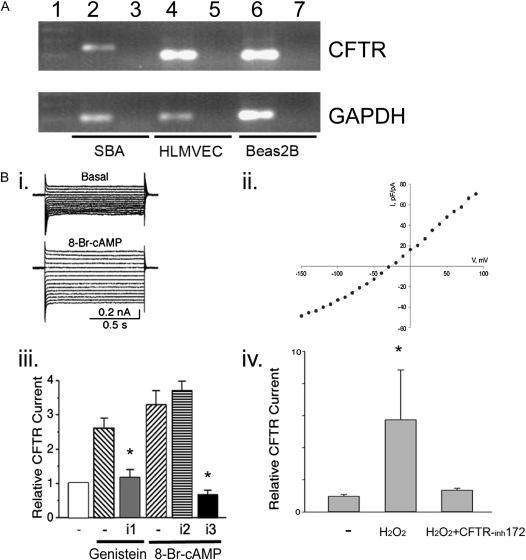Figure 1.
Cystic fibrosis (CF) transmembrane conductance regulator (CFTR) expression and ion channel function in lung endothelium. (A) CFTR RNA expression in sheep bronchial artery cells (SBA), human lung microvascular endothelial cells (HLMVEC), and BEAS-2B (bronchial epithelial cells, as control) was detected by routine RT-PCR. Size markers were loaded in lane 1; samples without reverse transcription (no RT, controls) were loaded into lanes 3, 5, and 7. (B) CFTR current recording by whole cell patch clamp analysis in HLMVEC. (i) Traces of Cl− currents recorded before (top) and after (bottom) application of 8-Br-cAMP (100 μM). Currents were evoked by voltage steps ranging from −100 mV to 50 mV from a holding potential of 0 mV. (ii) I–V curve of CFTR currents (I expressed as current density). (iii) Effects of CFTR channel activator and blocker on Cl− currents. Mean CFTR currents recorded in the presence of CFTR activators (genistein, 100 μM or 8-Br-cAMP, 100 μM) and specific CFTR inhibitors DPC (i1, 200 μM) or NPPB (i3, 200 μM) or non-CFTR Cl− channel inhibitor DIDS (i2, 200 μM). The currents were normalized to those recorded before application of the drugs (evoked at 50 mV) and reported as relative currents (mean ± SD; *P < 0.05). (iv) Relative CFTR currents recorded in the absence (−) or presence of H2O2 and the effect of CFTRinh172 (100 μM) (mean ± SEM; *P < 0.05).

